Lug-to-Lug Size and Why We Don’t Rely on It
The comfort of a watch on the wrist isn't only expressed with numbers.
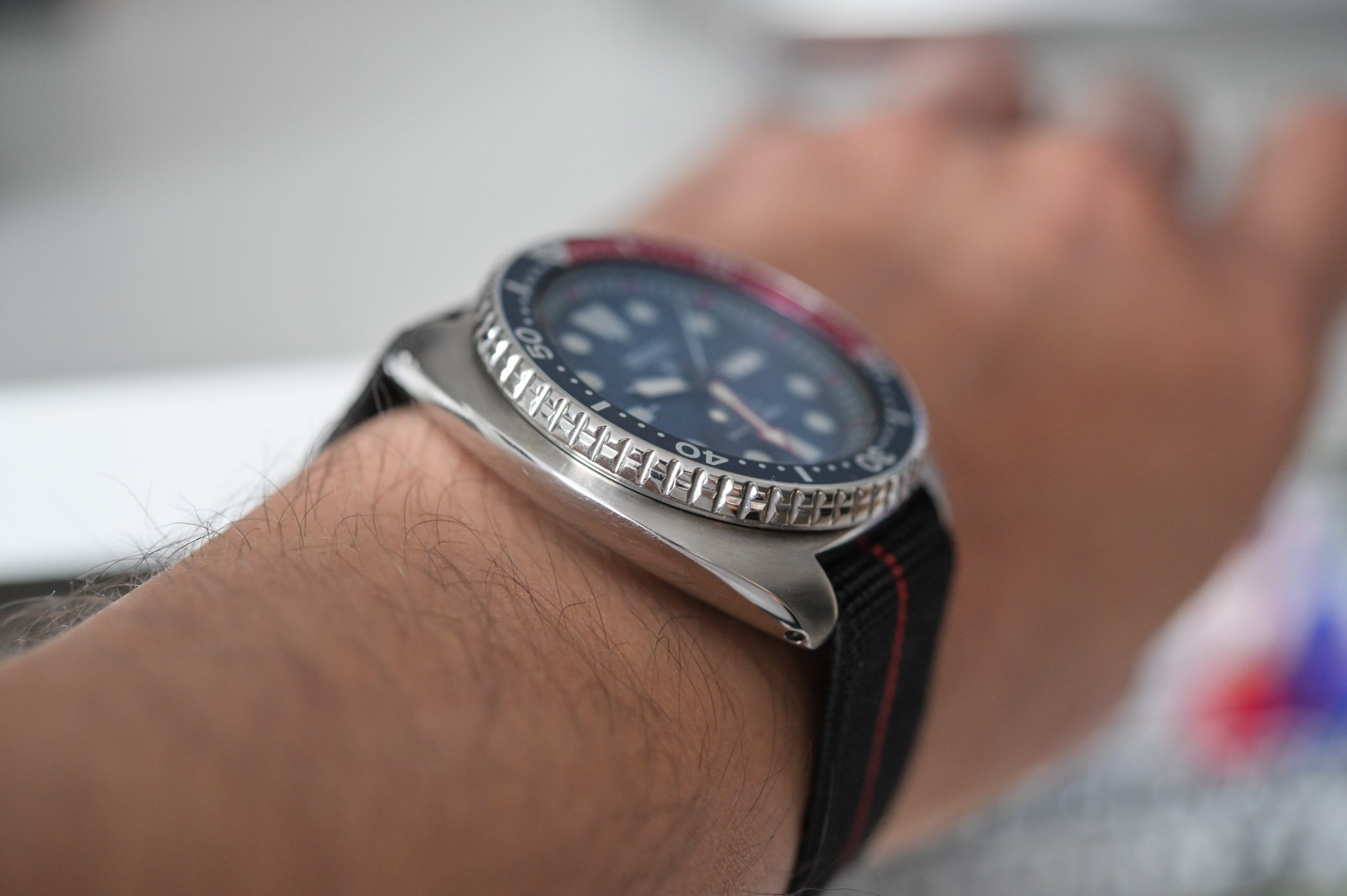
Since I began MONOCHROME in 2006, the information that brands disclosed about their watches has improved significantly. Diameter and height are now in pretty much every press release, and so is the actual movement. However, lately, we are often asked about the lug-to-lug size. Something that brands do not communicate about and neither do we. Here’s why.
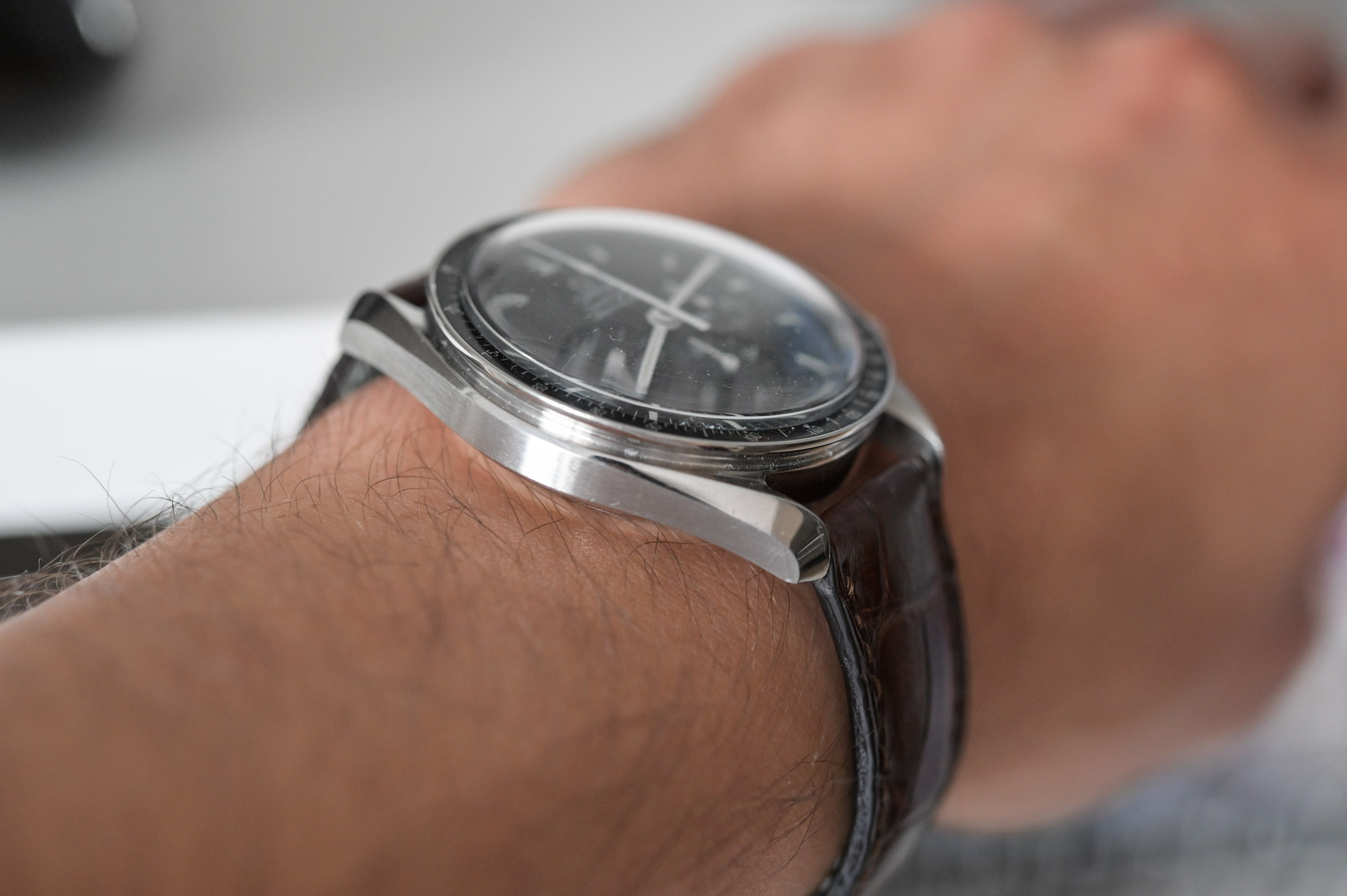
Over the past decade, communication about watches has improved significantly. Diameter, height and honest information about the movement are now available. Until a few years ago, we were confronted with too many ‘invented’ calibre names, while the movement was often supplied by ETA, Sellita or another third party and subsequently adorned by the brand’s name on the rotor. In-house nowadays really means “in-house” – designed and manufactured by the brand’s own people and machines. Proprietary means designed in collaboration with a third-party movement manufacturer (as the previously mentioned names) and manufactured exclusively for the brand, and thus not available to other brands. Most of this has been ignited by a strong request from collectors and watch enthusiasts, whether through online communications channels like forums or blogs or in direct contact with the brands.

Lug-to-lug size
For some time now, we have been getting requests from our readers to mention the lug-to-lug size. We don’t mention this because this information is not provided by the brands and a significant part of our coverage is about new watches that we haven’t handled ourselves, or handled for a few minutes only. Of course, we could mention the lug-to-lug size for the watches that we get for our hands-on reviews, but when we only mention this for the reviewed watches, the other watches that we cover on MONOCHROME won’t feature this information and the available data or specs about the watches would be rather unbalanced.
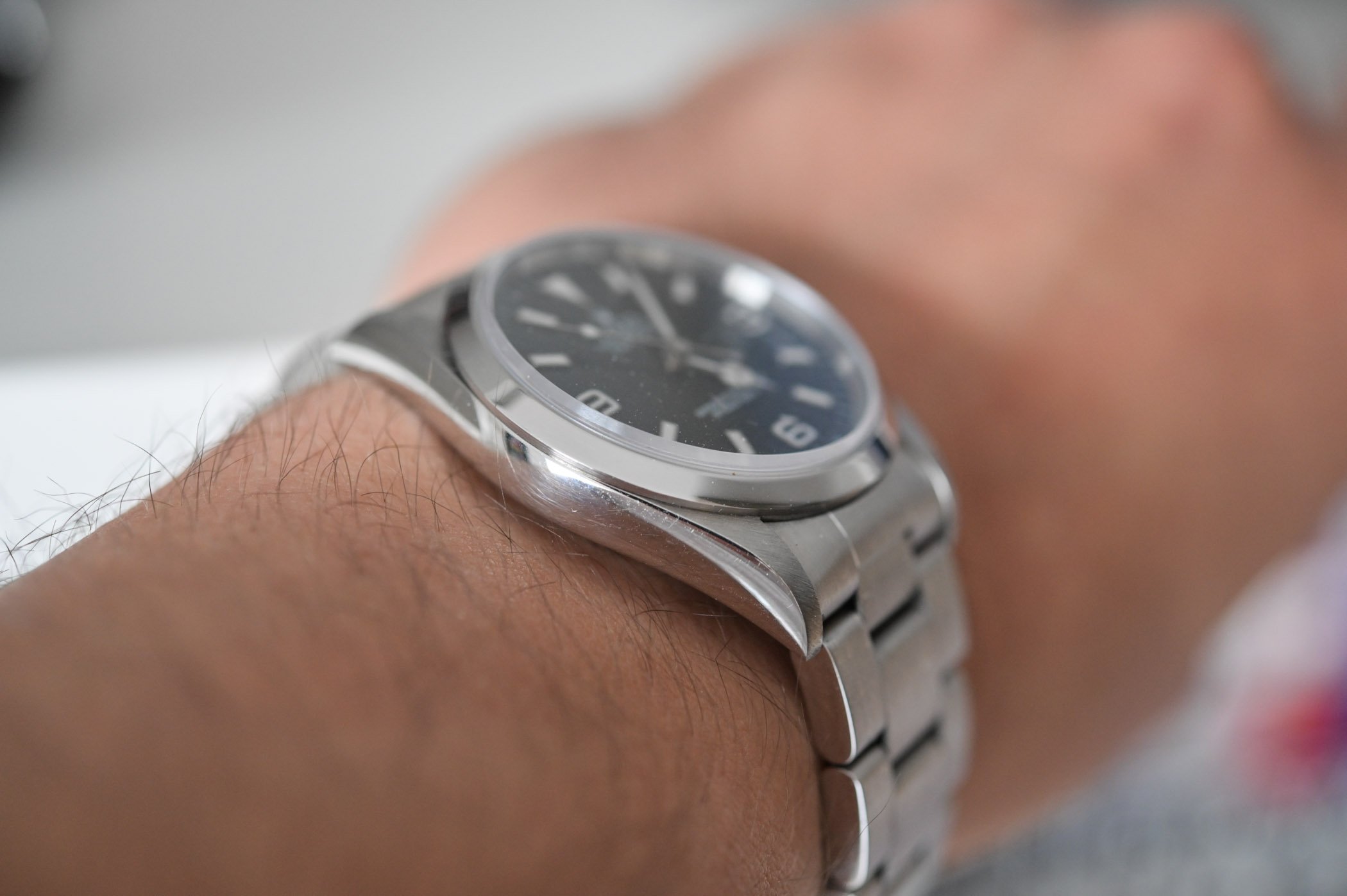
Besides the rather unbalanced facts of the technical specifications we report on each watch, I see another issue with the lug-to-lug size. And that’s the shape of the case! How a watch wears, or sits on the wrist, can’t always be expressed in a few numbers. The shape of the lugs and the shape of the caseback play a very important role! When the caseback is protruding, even a watch with small lug-to-lug dimensions will wear much larger and sit uncomfortably high on the wrist. Even when the overall height is not too thick, the shape of the lugs is very important.
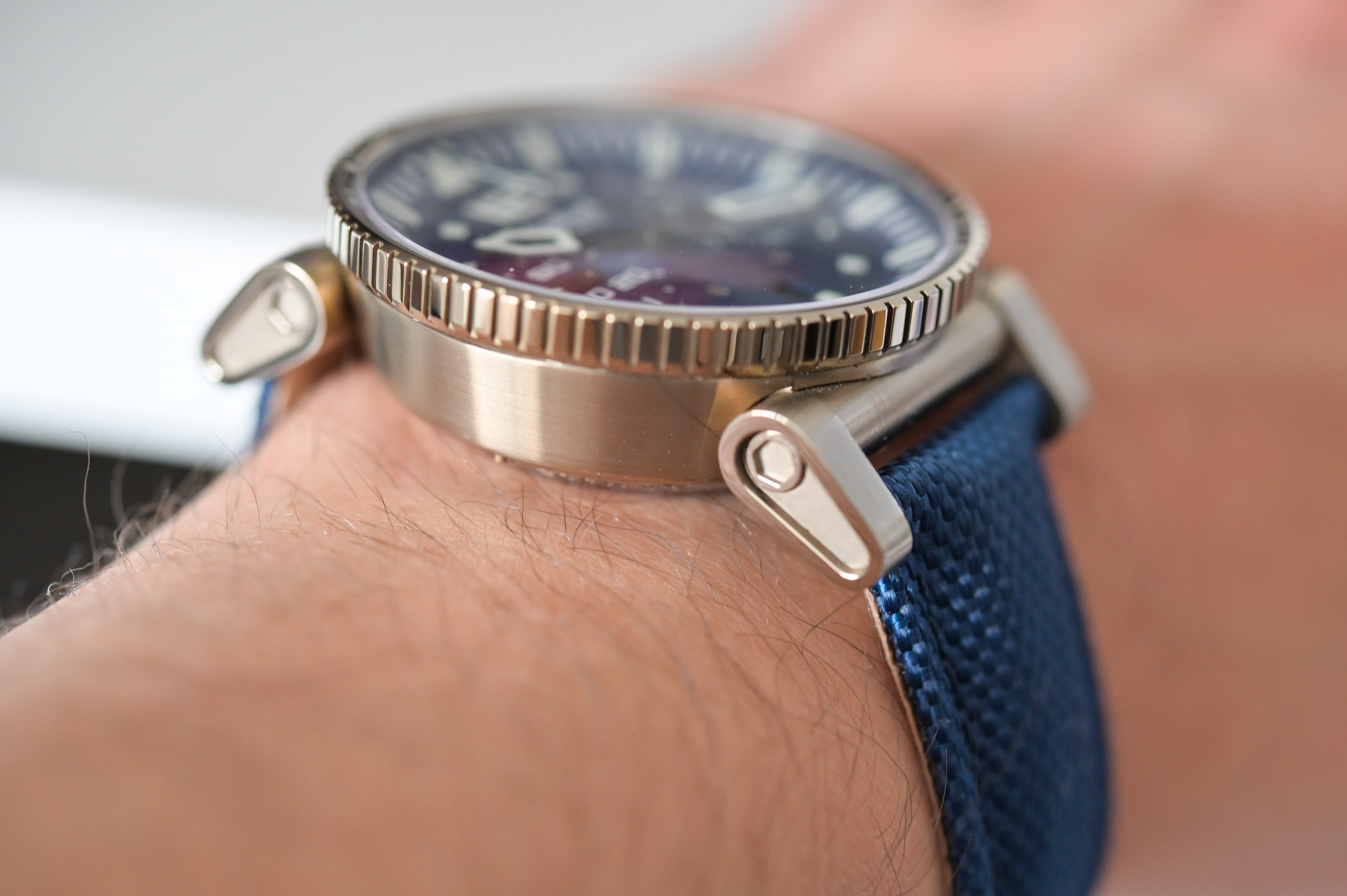
Solution
Since we see and handle so many different watches, the best indication we can give about how a watch wears is to tell you… We will mention the wrist size of the editor and how the watch fits his (or her) wrist and how comfortable it is. Since it’s not possible to judge how a watch really wears on the wrist with a few numbers, this is probably the best service we can offer you.
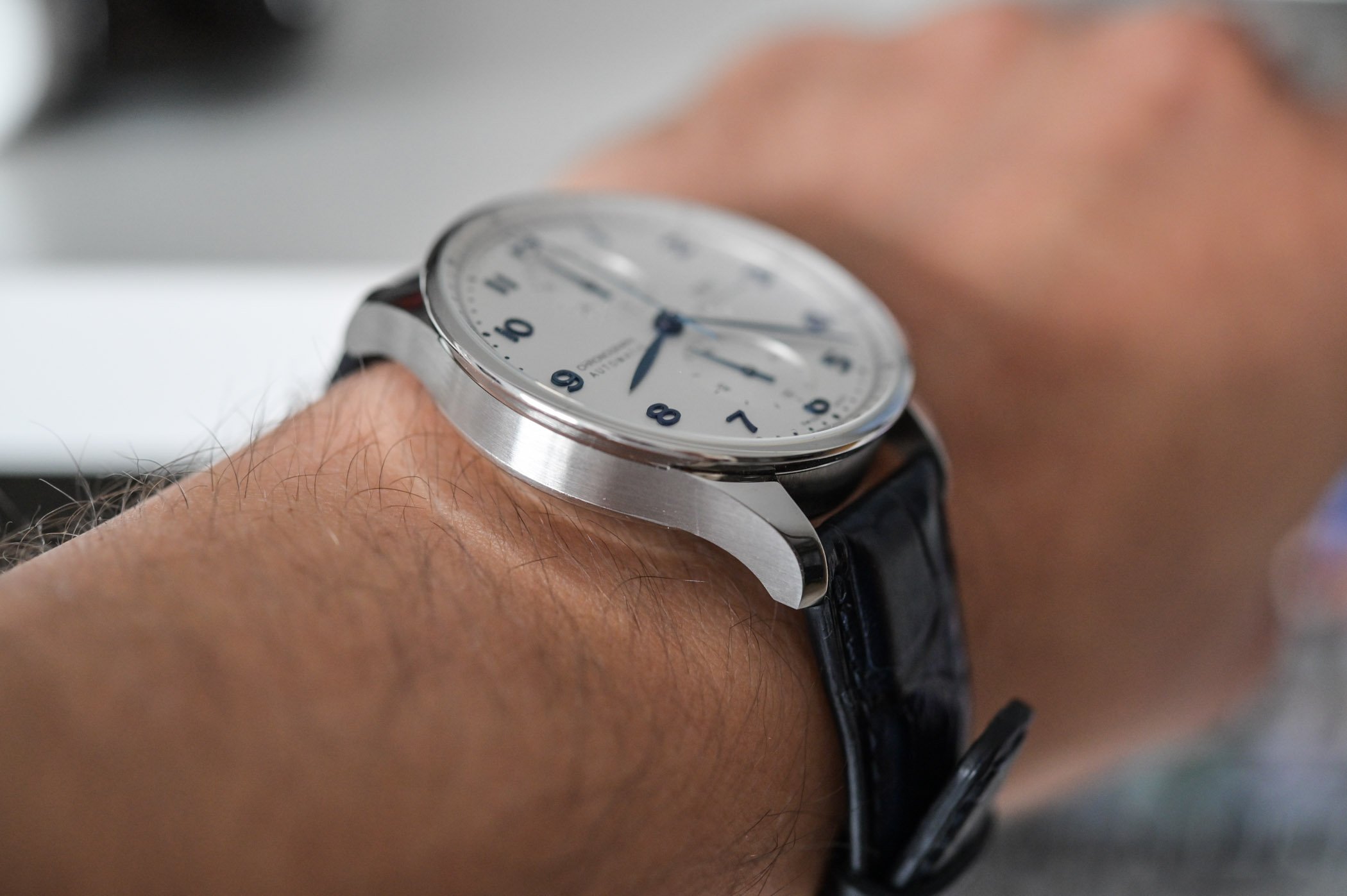
As an illustration, in order for you to see what we mean and to understand the differences, here is a selection of watches we had in the office, with the lug-to-lug dimensions… But as you’ll see on photographs, even two watches with the same lug-to-lug size don’t wear the same AT ALL. Every watch has been photographed on Brice’s wrist, measuring 16.5cm (a rather small wrist).
- Rolex Explorer – 36mm diameter – 43mm lug-to-lug
- Omega Speedmaster Professional – 42mm diameter – 47mm lug-to-lug
- TAG Heuer Monaco – 39mm diameter – 48mm lug-to-lug
- Seiko Turtle – 45mm diameter – 46mm lug-to-lug
- IWC Portugieser Chronograph Automatic – 40.9mm diameter – 49mm lug-to-lug
- Brellum Duobox Chronograph – 43mm diameter – 51mm lug-to-lug
- Aquadive Bathyscaphe – 43mm diameter – 50mm lug-to-lug
- Hanhart Primus Bronze – 44mm diameter – lug-to-lug depends on the wrist… (articulated lugs) but it can be below 50mm
UPDATE: I’m on vacation right now and limited in the watches that I can photograph to illustrate what I mean. However, with my son’s crocodile ruler, I managed to measure the lug-to-lug size of the watches I have with me.
The lug-to-lug size of the Vertex M100B is 49mm, both Seamasters are 48mm and the Porsche-Design Monobloc… well, with a shaped strap it’s quite difficult to exactly determine the lug-to-lug size.
Here are wrist shots of all four watches, and I think this gives more qualitative information for someone interested in buying this watch than the actual lug-to-lug size… if it’s possible to measure that precisely at all, like with the Monobloc.
Shape of the lugs, length of the lugs, angle of the lugs, material of strap/bracelet, shape of the strap/bracelet and of course the shape of the caseback, all play such an important role in how a watch fits on the wrist.
Since I’m on vacation I do not have access to a Calatrava and a Monaco, to photograph, so here’s my best attempt to show that lug-to-lug size only says so little…
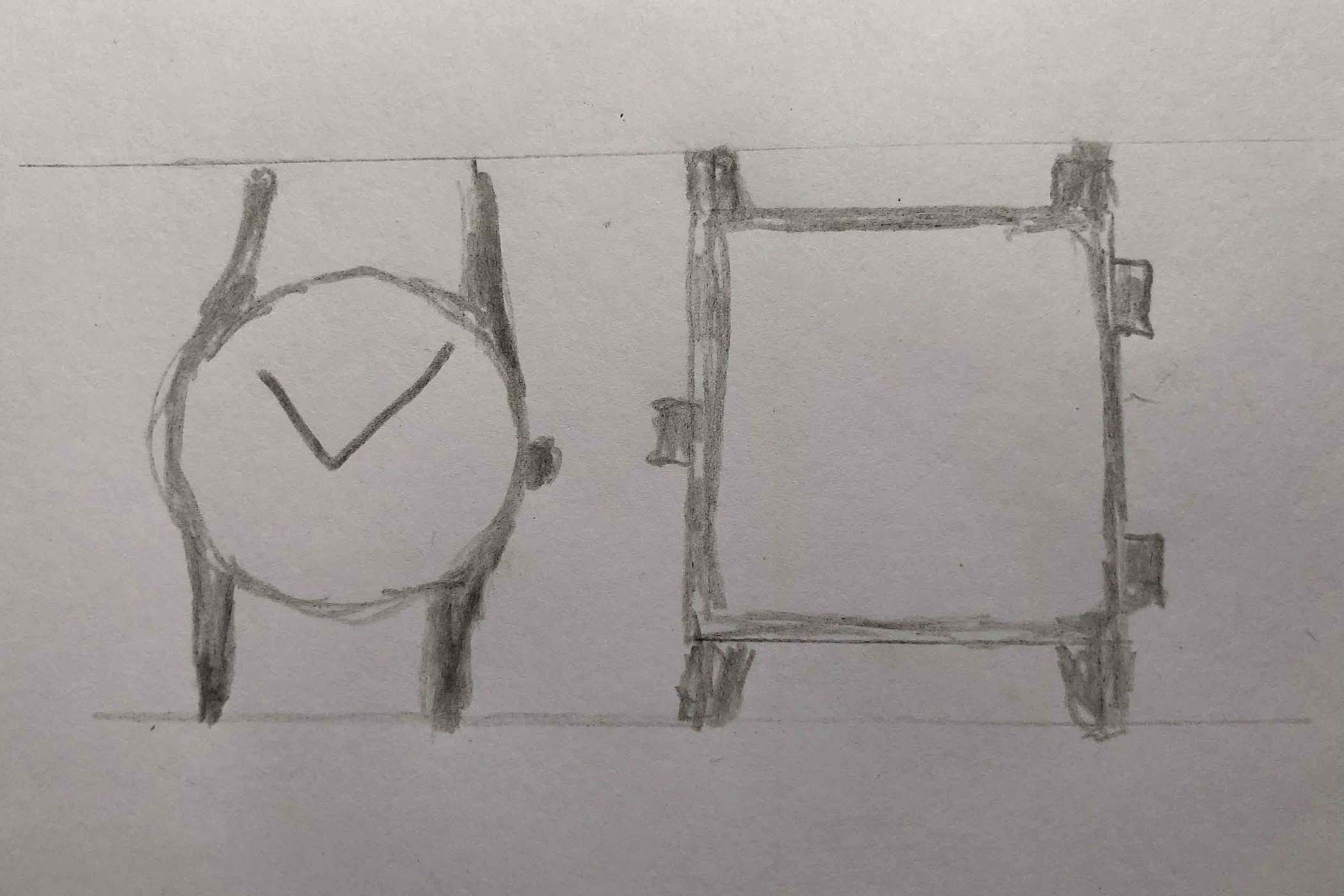
We try our best telling you how it fits on our wrist when we get to try it or have it in for review. This combined with the wrist size of the person who took the wrist shot, says so much more about how the watch is on the wrist.
I do agree that lug-to-lug size can be helpful, especially for people with smaller wrists. It can help determine whether a watch (or rather the lugs) would stick out our not. Our wrist shot and description are, IMHO, more qualitative, and therefore I stick to the point that we do not rely on the simple lug-to-lug size. When watch brands start communicating on lug-to-lug size, we will gladly include this. But please, do not rely on this measurement, as to determine whether a watch would fit nicely or not.



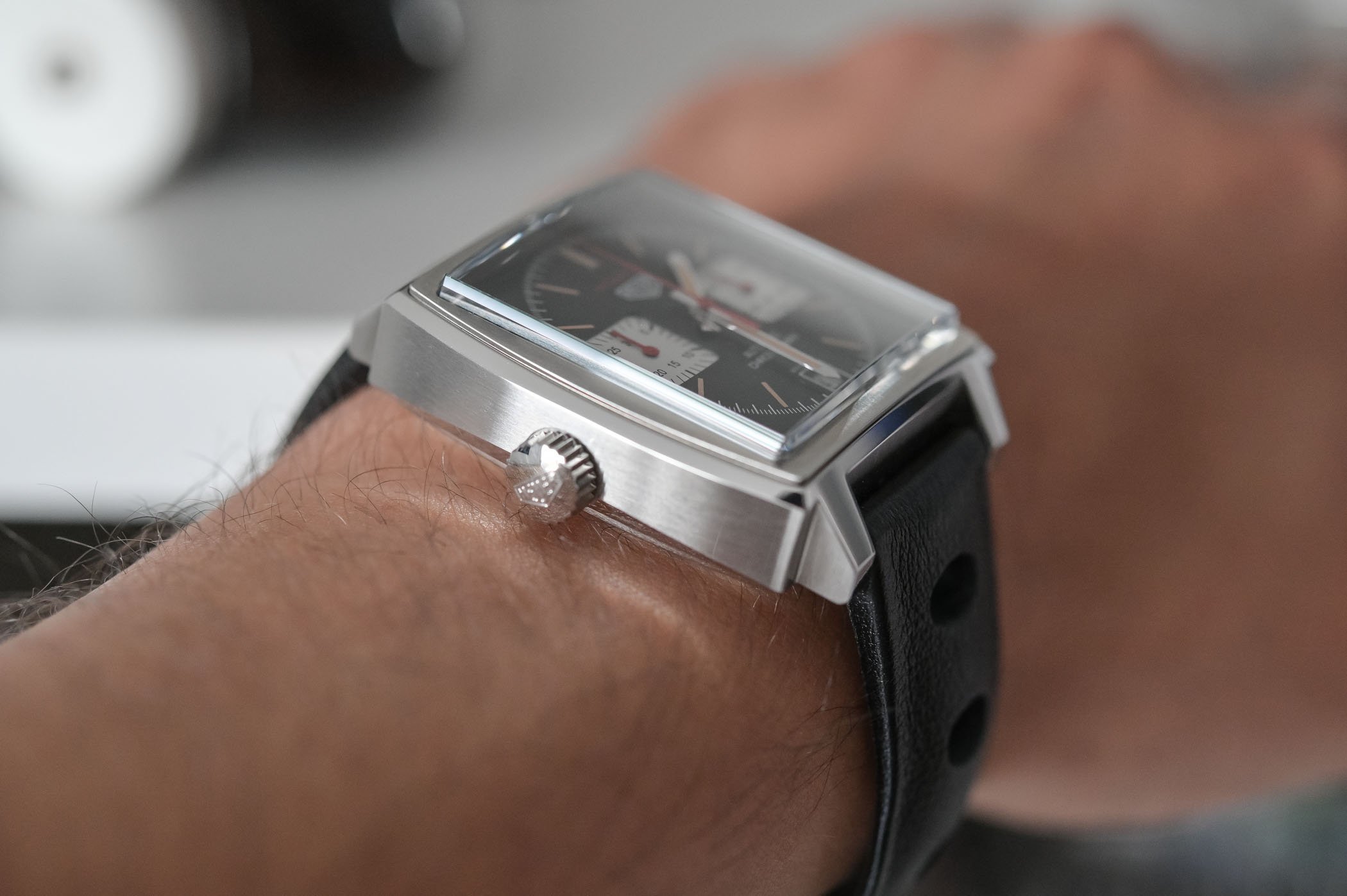

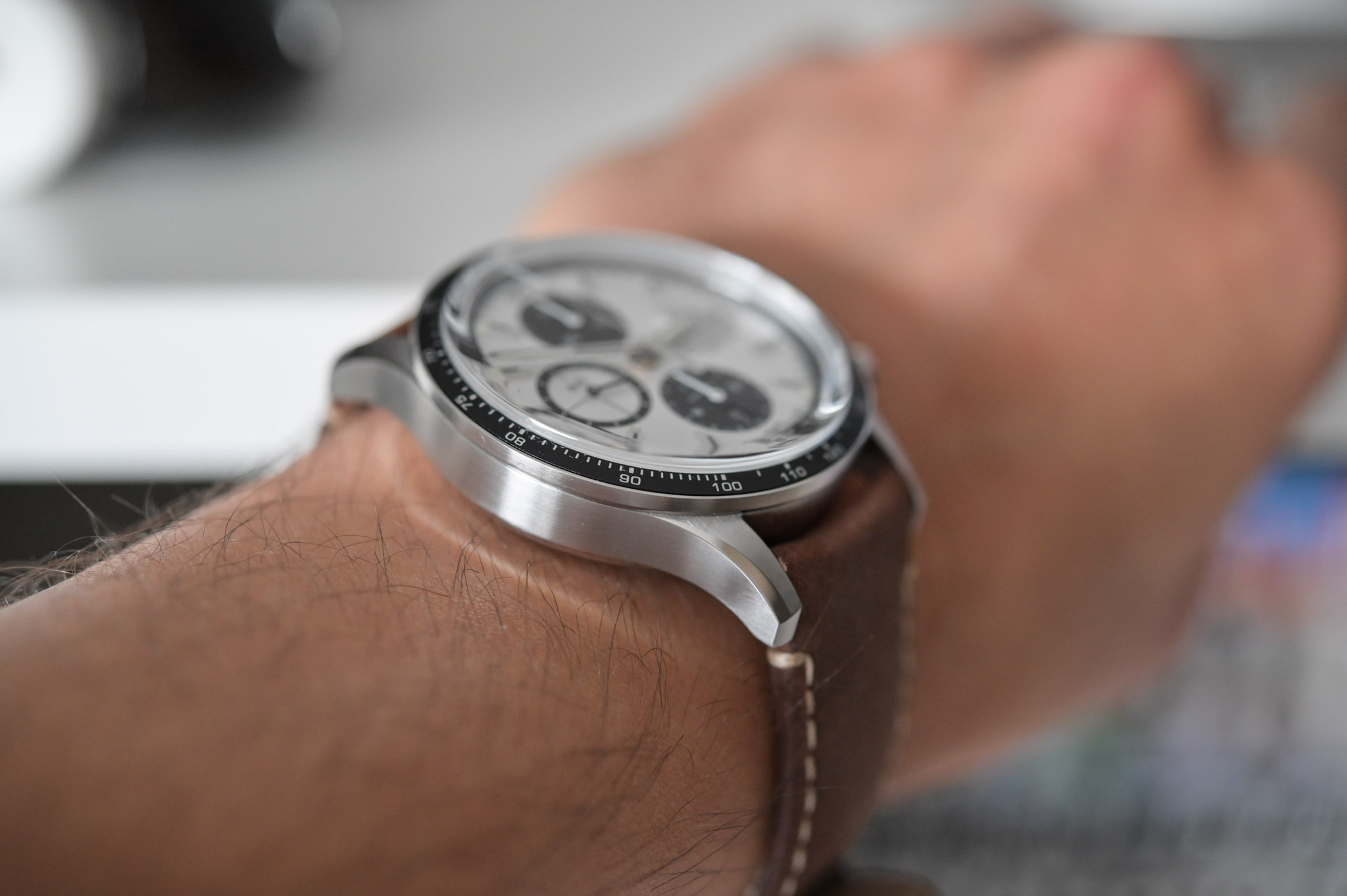
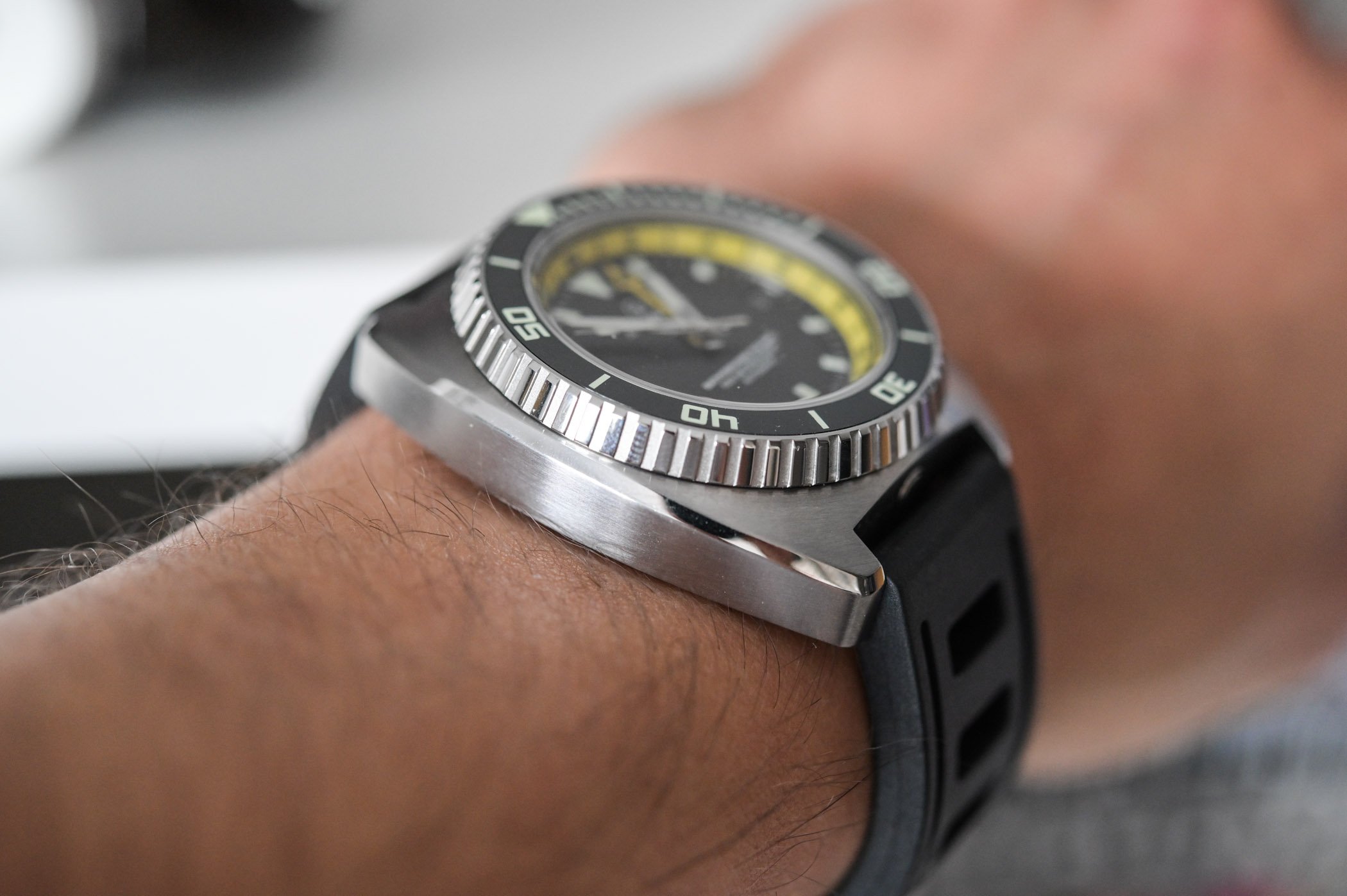

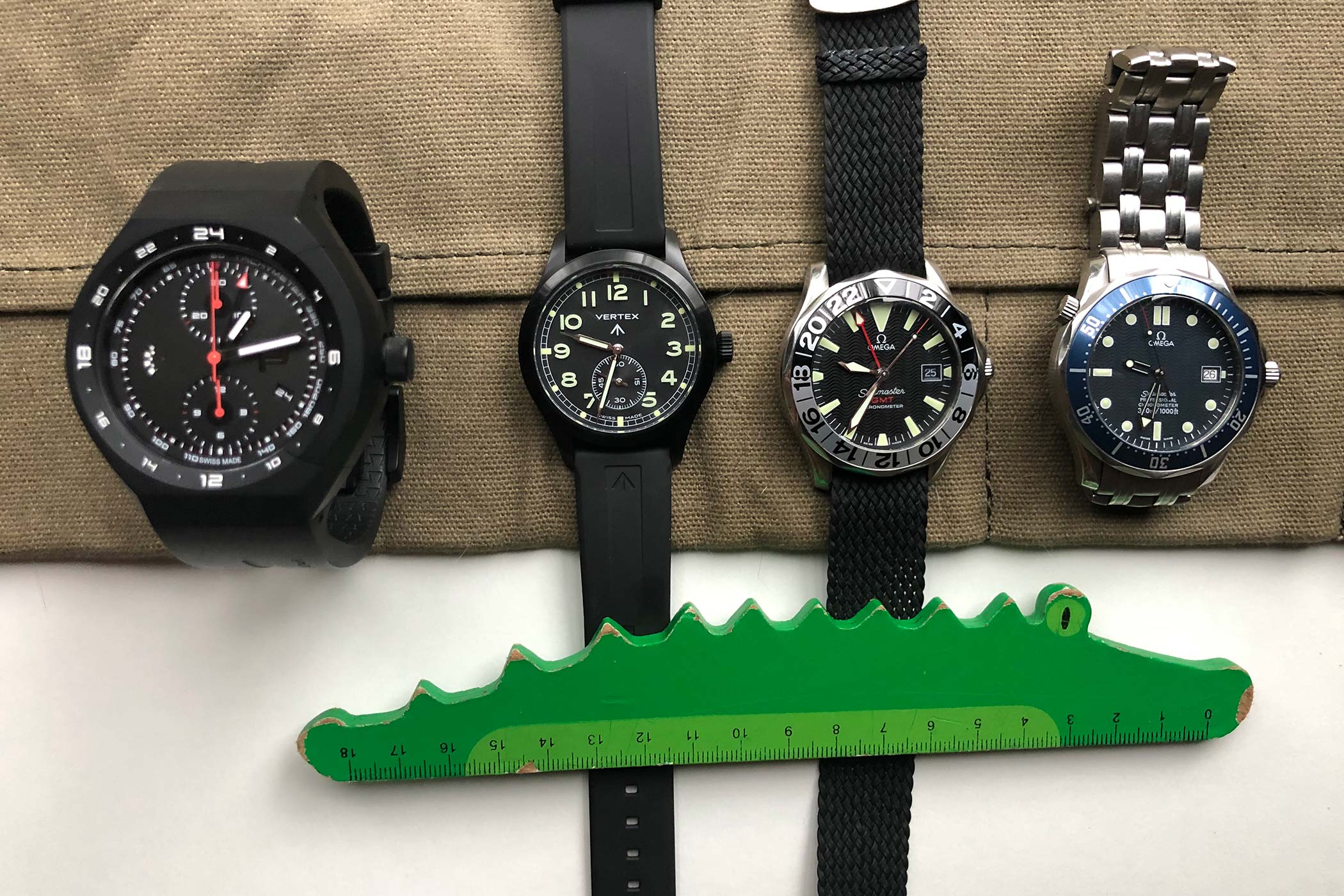
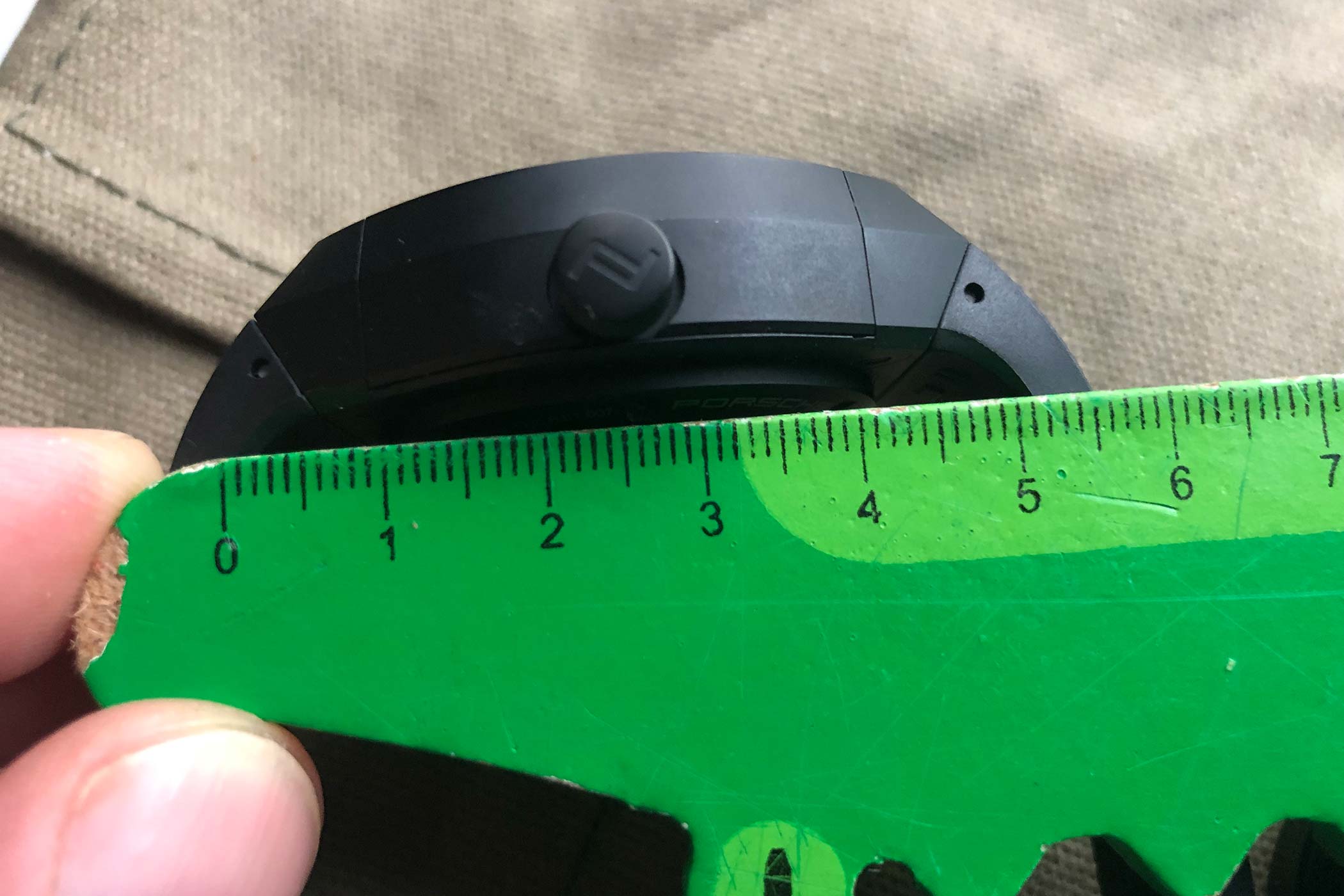
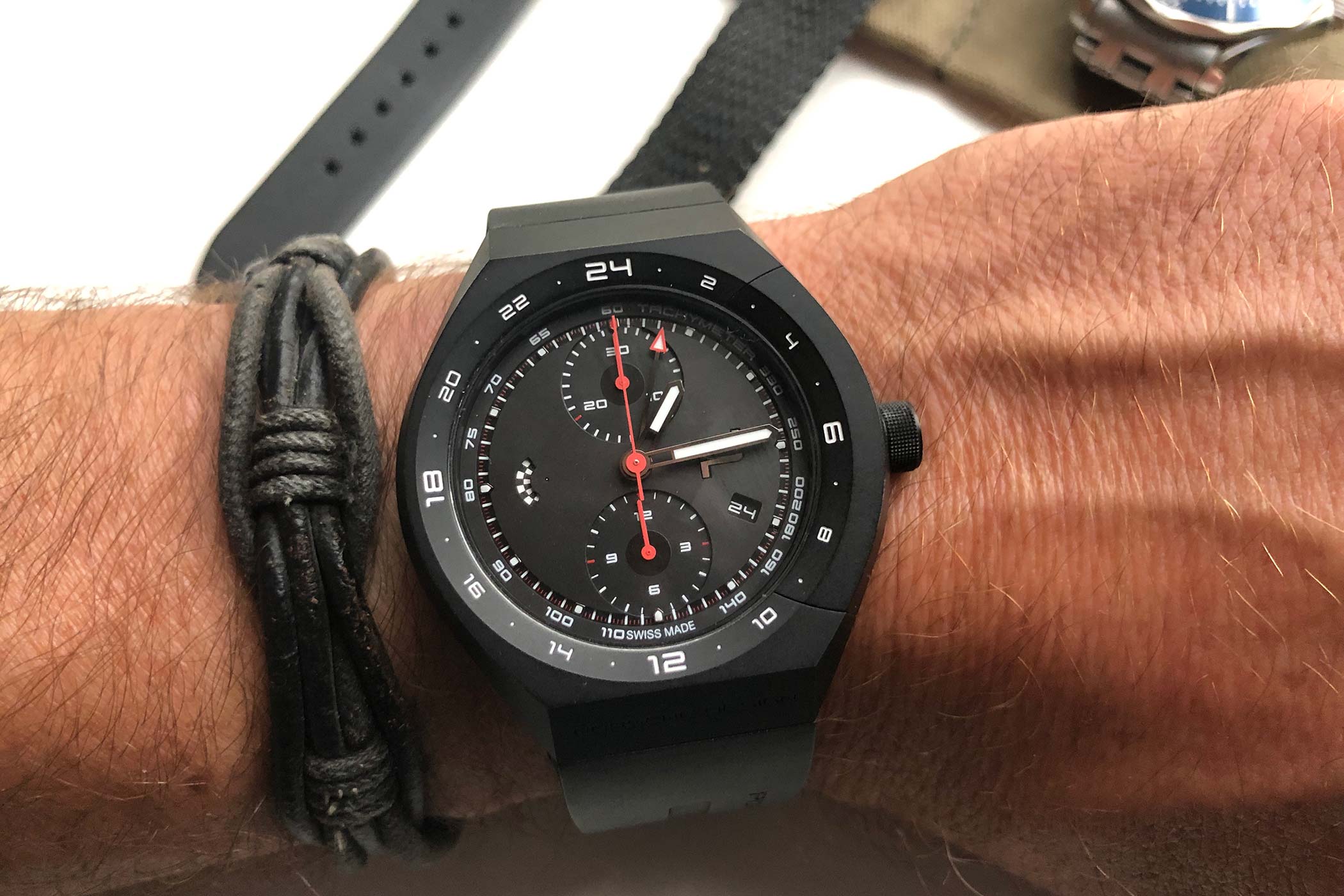
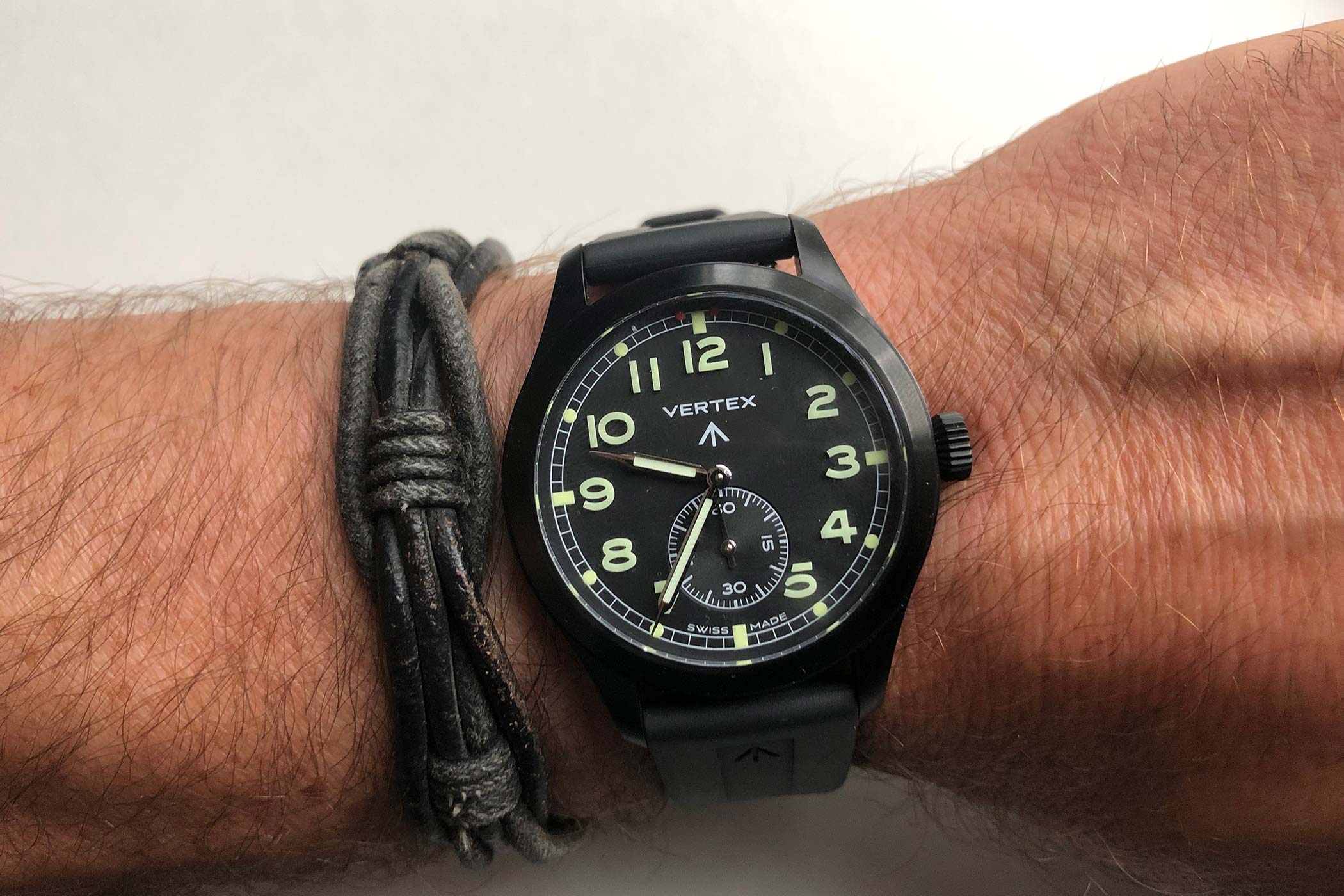
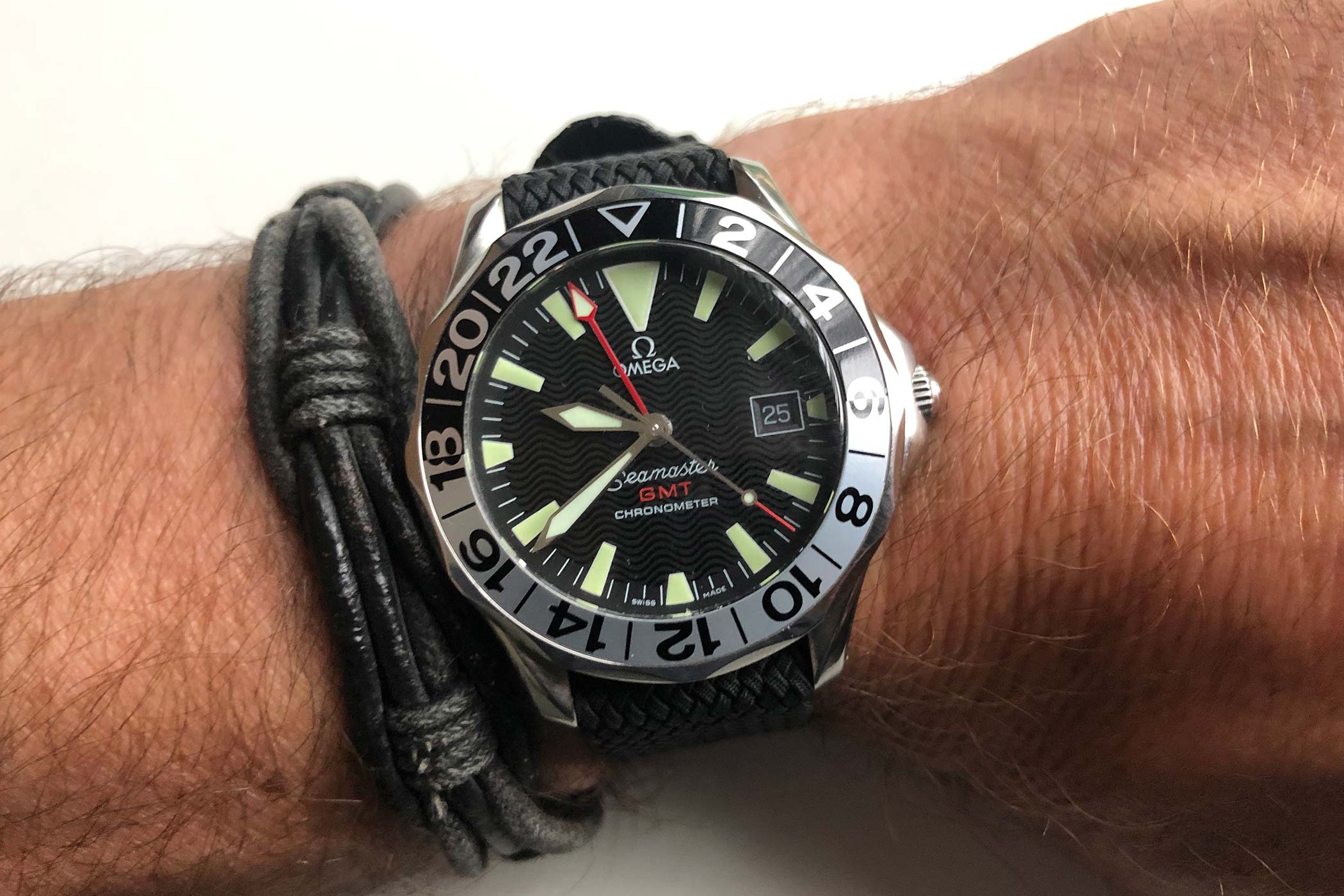
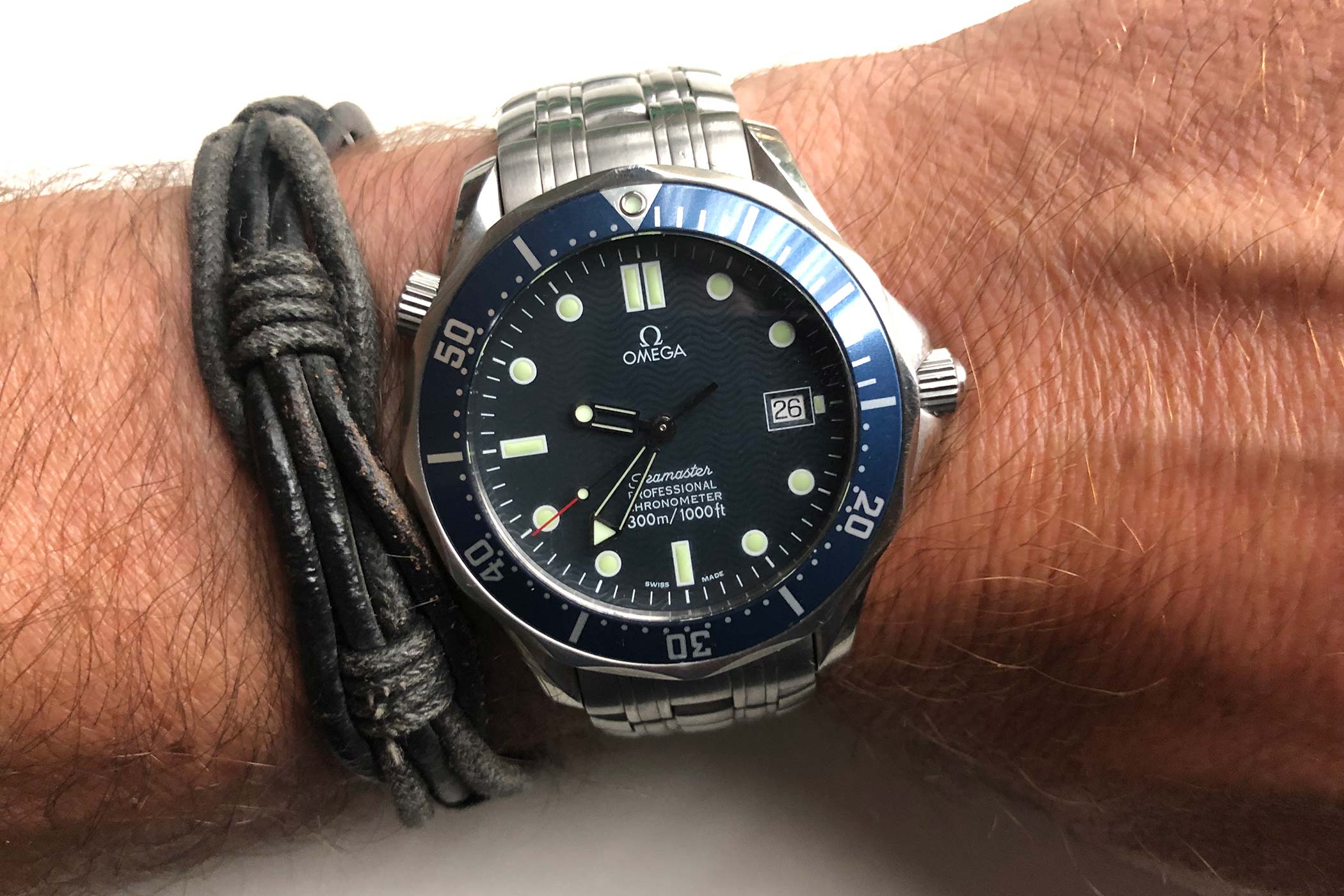



41 responses
“And that’s the shape of the case! How a watch wears, or sits on the wrist, can’t always be expressed in a few numbers.”
…but we always hear the bloggers saying:
X watch wears big
Y watch wears small
…and, generally, there’s a direct correlation with these feelings and the ‘lug to lug’ length.
The Seiko Turtle is a great example.
You say it ‘wears’ smaller than it’s dimensions.
And the Speedmaster wears ‘right’ – lo and behold, 46mm vs 47mm lug to lug.
Additionally – adding the lug to lug number enables and gives the ‘web’ user a more tangible estimate of ‘size’. Such that – giving us the number won’t actually hurt you, but it helps us – it’ll lend more credibility to a great publication like Monochrome.
Lame…. more information is always better, especially one of the key dimensions of a watch.
I like the lug-to-lug measurement, because in my experience it gives a good first indication of how the watch wears (as long as I know the width, not the circumference, of my wrist):
A 55mm lug-to-lug will never fit my 52mm wrist, but a 52mm lug-to-lug, which wears small, might still be okay. But of course you need both pieces of information – lug-to-lug AND how it wears.
Same for smaller watches: A 36mm diameter with a wide lug-to-lug might still be okay on larger wrists, but a 36mm with small lugs is probably not the watch for wide wrists.
(as long as you don’t intentionally go for the XL- or XS-look, that is)
when was more information and education not a good thing, just include as much also the ratio of the lug to lug with the strap lug width plays a massive balance role, I think it’s important to note that those 2 are what makes a good balance.
The same argument could be made by giving only the diameter and lug-to-lug, and not thickness. Arguing that thickness numbers don’t truly represent the comfort of a watch on the wrist…
Or even claiming that none of the dimensions matter, and that only the design of the watch affects the way it wears on a wrist… sounds silly right?
What I’m trying to say though, is that any 3 dimensional object has 3 measurements (width, height, and depth), and it only makes sense to provide that information. It’s great that watch brands are starting to give more honest information about movements and (in some cases) the lug-to-lug. We should all be pushing these watch brands to provide us with as much information as possible about their watches, rather than saying we don’t need it.
The very first picture example proves why lug to lug is important. 42mm case on the Speedmaster implies a “large” watch, but the 47mm lug to lug shows that it’s actually not “large”. Without the lug to lug, it would imply the Speedmaster was big.
How a watch wears is a function of many things. Pure dimensions such as diameter, thickness, and lug to lug go a long way to illustrating how a watch will wear. Yes there are other elements that also contribute to how a watch fits, such as shape of the lugs (straight or curved) and shape of the case (round, square, or rectangular). The Monaco and Reverso are perfect examples of this. However, shape of the lugs and case is relatively simple to determine from pictures, while pure dimensions cannot be.
For those of us who get our information online, buy watches online, and/or don’t have ready access to dealers, it’s important to have as much information as possible to help us get a good estimation of if a watch will suit us. The last thing you want to do is order a watch sight unseen, realise it doesn’t fit properly, and get stuck with it or have to flip it and take a 50% hair cut.
Please include lug to lug dimensions along side diameter and thickness where possible.
The first reason you state for not providing lug-to-lug is that it would create an imbalance in the information listed on hands-on vs non-hands on articles… I don’t understand how that is a negative. This would more accurately reflect that you know more about the watch when you are able to do a full hands-on review. Is that not the value proposition of such reviews?
Another factor overlooked is the shape of the individual’s wrist which would invariably differ from another person and would influence how a watch wears.
I respectfully agree with all the above comments, & probably the wis community as a whole. Lug to lug is one of the most critical measurements! What I’d like to see regarding the wearing experience in review articles, is how a watch compares to icons in its class, like the Speedy Pro, Datejust, Turtle,or watches in the author’s own rotation. Also end link design can definitely extend the effective length of the case, or help it drop quickly to the wrist.
Lug-to-lug size is important and we should be told. Thickness and weight are also important.
We can see the shape of the case and lugs from the photographs. However, it is not uncommon to see photographs of what appears to be a rather small wrist wearing a watch which looks far larger than the measurements would suggest. Phone cameras are notorious for producing this affect due to their wide-angle lenses. Focus closely and the watch appears much larger than it actually is. If possible, MW should have a standard set-up using a full-frame camera with a 50mm lens attached and all photos should be taken from the same distance on the same sized wrist. Also, there is a tendency to wear watches below the wristbone, which confuses things. I think everyone commenting on this site has owned a lot of watches and has read many comments about others watches on fora etc. We know that a Tuna wears small because of the lugless design and we know that for example, the recent Hamilton Khaki Field Mechanical has been widely criticised for its pointlessly long lugs. But nobody lives within a convenient travelling distance to every single watch brand on Earth and nobody wants to buy online only to discover that the watch is too big, or small, for their tastes.
I really like Monochrome watches, you always provided good timepiece related content. However, I never quite understood why it is so hard to bring a ruler along to measure the lug-to-lug distance.
I love Monochrome but …….for goodness sake this article is ridiculous !! if you have the lug to lug mention it and also say how it wears. More info you provide the better !! trust the intelligence of your readers for goodness sake.
Your pictures are not suite honest. watches sit differently so its the overall impression is distorted. (Ex: the speedmaster lays much more on the back of the wrist than the explorer so they seem almost the same size)
How about doing the job and reporting properly the lug to lug measurement of the models you quote? The Speedie for instance is 48mm and the Turtle 47mm. Every mm counts! I must agree with the above: this article is ridiculous (not its topic, though).
Gents, I’ve posted an update. It would be appreciated if you can keep your comments friendly. MONOCHROME is available for you to enjoy, for free, and we work very hard to achieve this. Thanks for your consideration.
Of course the case shape matters…but give your readers some credit: we know not to judge a watch ONLY by its dimensions. What is “comfortable” for some is uncomfortable for others, even with the same wrist measurements; we all have different tastes and wants in our watches. A lug-to-lug measurement takes no more than 3 seconds (maybe 4) and gives potential customers MORE information to make an educated decision about what could work for their tastes/wants.
“Comfort” is so subjective in this context. That’s the equivalent of someone telling you to dress warm because it’s cold outside……………………..wondering what the temperature is now, right? Exactly.
In every respect Frank, I think that lug-to-lug size is one of most important factors, how the watch sits on the wrist. Pretty much the same for the hight.
Actually, I agree with many of the points in the article – but I still think you should mention the lug-to-lug. I really like that you’ll say the size of any model’s wrist – it frustrates me that this isn’t mentioned all the time in watch reviews, right along side the lug-to-lug.
In short, I think the qualitative view is, as you say, more important. However, the lug-to-lug is helpful data, and if that is hard to measure (like with the Monobloc), say so! We’ll understand, and it’s still good information!
Pretty clear to me based on comments what needs to be done . Granted if you don’t have the watch in hand then say why LTL won’t be available simple as that .
I am not going to speak like an educated person here because
1. I am upset and
2. This is a very simple issue
MonChrome Watches please stop the bullsh..t.
I love to read your articles because they keep me in the loop on new and upcoming brands, releases and other up to date news.
However, this is just plain unnecessary (the article).
How could you say lug to lug is unnecessary.
The brands do not list them because they know their watches are out of proportion. At least, this is the feeling that I get because most of the time, the watch is unwearable! not by my standards but everybody’s standards.
The larger lug to lug sizes coming out today by most brands has become an epidemic. It should be an industry standard for brands to lower their lug to lug size. This will give more transparency to the consumers.
The article was straight forward and well lays out the editorial decisions about whats included or not when providing dimensions. There are many variables which can invalidate LTL measurement, so I fail to see the validity of negative comments here. The most obvious issues are deflection from the case back plane, (z-dimension or height) and the shape and size of an individuals wrist. LTL is only one of three issues needed to assess a good fit or not. Article says MW will include LTL when the mfgr provides, so I don’t understand the complaining. Readers may be better served to direct their ire at manufactures.
L.A.M.E…. Is this article for real…? More information is ALWAYS better. What the author is basically saying is “We’ll tell you what feels best on our specific wrist and you should base your knowledge on that.”
In reply to your update; I understand the point you are trying to make that the shape of the lugs, length of the lugs, angle of the lugs, material of strap/bracelet, shape of the strap/bracelet all affect how a watch wears (I acknowledged as much in my previous comment). But I also stand by my comment that decent photographs will give you a decent idea about many of those points, EXCEPT the actual lug-to-lug dimension.
The whole idea here is to provide dimensions, photographs, and the authors opinion on wearability as all of these factors are critical in determining whether a watch may be suitable for the readers wrist.
Photographs and the authors opinion ALONE are worthless. Everyone has a different size and shape wrist, and everyone has a different opinion on what is a good size watch. If you ask the average Panerai enthusiast what a good size watch is, you will be told 44 or 47mm. If you as the average Hodinkee author what a good size watch is, they will tell you 36mm. There are certain websites that will tell you a watch wears beautifully regardless of what size it is because they have been paid to do so.
Dimensions aren’t everything, but they are an important way to help cut through the BS about how a watch wears. I trust Monochrome and it is one of my favoured publications, that’s why I’m taking the time to try and explain myself here. I really do think it would benefit the community if you could include the lug-to-lug dimension whenever you can. I don’t expect you to run around Baselworld 2020 with a pair of vernier calipers measuring every new watch of the show. But taking the measurement whenever you do a proper hands-on review would be a huge help.
Sincerely,
A small wristed fellow who likes to buy watches online
We know the watch manufactures know the lug to lug dimension, they made the watch. Isn’t it just lazy and or lame that they don’t provide this information? As manufacturers and marketers of consumer products, to a relatively well informed consumer base I might add, what’s their reasoning for not paying attention to what consumers want to know? And if Monochrome is reviewing a watch, and has it in hand, just measure the darn thing. There are no excuses for any of this.
I have to disagree. Lug to lug is the #1 unit of measurement when trying to qualify/disqualify a new watch I hear about. After trying a Seiko Tuna (with relatively large case diameter but no lugs) you realize that the “case diameter” is only part of the “wearability” calculation.
We have more space on our to accomodate “wide” cases (9 o’clock to 3 o’clock) than “long” cases (across wrist 12 o’clock to 6 o’clock). Arguably, the limiting measure is more often lug to lug than diameter.
For this reason, please count this as another vote in favor of including lug to lug (with all your caveats above).
One example that proves the point for me – a Seiko Tuna sbdb013 at 50mm case size (50mm lug to lug) wears better for me than a Stowa Marine 41mm with 50.2mm lug to lug. On paper, the 41mm should wear much better, but it doesn’t. This is why lug to lug matters to me.
The Seiko Tuna seems to be thee default answer to this….issue (which 90%of people agree is not an issue but is in fact a perfectly straightforward and much-needed piece of information).
I too own a 50mm Tuna. I feel honour-bound to add that it is a baby tuna (sigh!)
It fits me.
The Oris BC3 (at a nominal 42mm) did not fit me.
Why?
One reason.
Lug to Lug measurement.
My Bulova Curv Chronograph is specced at 44mm diameter, but that measurement is irrelevant because the entire case, lugs and strap are curved as in the Porsche cited above, meaning the lugs effectively go round my wrist. I don’t own calipers but the point is, the measurement of the diameter of this curve (EFFECTIVE LUG TO LUG) IS very important. I have a flat wrist-top which is….(searches for basic wooden ruler)…..approximately 15cm wide. That is, laying a ruler straight across the top of my wrist, the last point at which my skin makes contact with the wood is at 15cm. A prospective buyer with a wrist-top measurement of say…18cm would possibly find the watch hovering above his wrist.
If there is one thing that seasoned watch-buyers can tell you, no matter which brands or styles or sizes or movements or brands they prefer, the actual experience of trying on a watch and looking at it in person can sometimes be totally different from one’s expectations. I cannot tell you how disappointed I was when I eventually decided to try on the Tudor Black Bay 36. And I cannot tell you the thrill I experienced when I tried on the Rolex OP 36.
“Aint nothing free! “
Seriously, if you don’t care about LTL, you may as well not report diameter as it’s even more useless for determining whether a watch will fit you. LTL along with a description of lug shape and how far the case back protrudes would be the pertinent information. Diameter is irrelevant unless your forearms are less then 45mm in length.
Please include the LTL information. You may not rely on it, but the rest of us do.
This article is so stupid, as so many others have pointed out. Talk about a complete lack of logic. And this is why so many of us do not rely much on your reviews. Your pictures are nice, but in that case you may as well not write any words at all. And then you destroy your point by pointing out watches with large diameters that wear smaller- but why do they wear larger? Because they have relatively short lug to lug as you point out. Of course there is much more to the story than lug to lug. You want to see a good review- check out watchbox reviews on youtube where he not only talks about the lug to lug but also the curvature of the lugs, and even more importantly the type of bracelet end links. Also, while your pictures are nice just to see the watch, they are nearly useless for getting any idea of how the watch wears. Why? Because when you take close up photos the watches always look larger than they are in comparison to the wrist. I can show you pictures I have of a 34mm watch that looks pretty huge in a close up photo, but it doesn’t look like that at all in real life.
Lame no reason not to declare lug to lug, no reason to not to declare lug angle as well. Do the math, what % of contact and where on tour wrist do you want it. The more information the better. Anyone with the time to try on a few watches will be able to figure it out themselves. That being said, after all that work, why didn’t you at leadst rank the fit for all those watches given you had the same writs involved.
I can’t believe what I just read. Frank, you articulated some good reasons as to why L2L is NOT enough or the be-all-end-all measurement to determine if a watch wears right but it certainly is a VERY important measurement that gives us a good ballpark estimate if a watch may even work.
this is easily the biggest load of bull i have read on a watch review site i’ve seen in a long, long while 😀 😀 :D.
if you provide ANY measurement at all, than the L2L is THE most important, as it has THE most significant impact on wearability (diameter is insignificant and irrelevant. and the watch/lug shape can easily be seen from photos).
oh well, just another marketing site to add to the ignore list
Imagine selling a car without specifying its width, because how wide the customer’s garage is, apparently doesn’t matter. This is what you sound like trying to sell a watch without stating the LTL size.
Everything you wrote – every single argument – just convinced me even more to why the lug to lug is crucial to inform about. Best and simplest argumet is: case diameter is deceiving. As simple as that.
Feels like a really long excuse for an oversight. If anything, this article solidifies the need for lug-to-lug measurement. Baffling.
LOL, no. L2L is very important as even if a watch wears smaller, if the L2L is too long, there is no way it will fit.
It’s not too late to delete this article…
Dear monochrome folks, after reading all these comments, with the vast majority stating that L2L data is very important, have you changed your official position? Admitting that you were wrong is a good thing. I, for one, would respect you more and be more likely to read your articles.
@Stuart… Thanks for your comment. I can’t admit that I’m wrong when I don’t think that I’m wrong. The whole point is that I state, we don’t RELY on L2L, and the one thing I can rely on is the expert opinion of our team. Often (more likely, never) L2L is not available with the info from brands, and when we run from one brand to another at trade shows, I’m afraid that we don’t have the time to measure each watch… We take photos, and only occasionally, we pen down some specs or an explanation for something technical. I’m certainly not AGAINST the use of L2L and would applaud it if brands will add this information to the spec sheet (and yes, we do ask brands for this too). But for now, we do not rely on it…
Just like my ex, Frank can’t admit he’s wrong and he’s doubling down. Just listen to your audience.